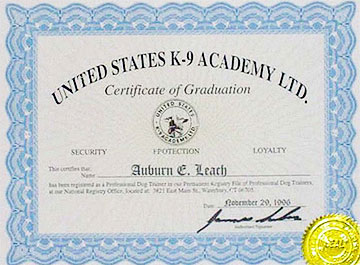
Why does my dog do that ?
To understand canine behavior also requires us to look at our own behavior as dog owners. Dogs are very tuned in to the moods of their people and their environments. For instance, we often inadvertently reinforce negative behavior by responding to it. Your dog is barking, which gets your attention, so he learns he can get attention by barking (even if it’s negative attention). If there is a lot of fighting and arguing in the household, the dog is more likely to reflect this stress through adverse behavior. If the home environment is quiet and calm, your dog will be calmer, as well. So, is Fido urinating on the carpet because he’s being disobedient, or is it his way of letting you know he’s stressed and upset ?
Dogs operate within a pack. Their pack provides the structure, hierarchy, security and “rules” for each member. You are also a member of your dog’s pack. Ideally, you are also the leader or “alpha dog”, who effectively communicates the rules and sets clear boundaries your dog can follow. So, to understand dog behavior, we must first understand where your dog sees himself or herself in the hierarchy of your family structure.
Dogs are very intelligent. If you are consistent in spending time with your four-legged pal, provide proper training and clear feedback, your dog will respond positively.
Here are some important things to keep in mind:
A) Spend time with your dog: Dogs need companionship, and so do people. If your dog is alone a good part of the day, she is probably going to experience separation anxiety and display undesirable behavior (like chewing your favorite pair of shoes, furniture, or a hole through the wall). She’s not intentionally being naughty; she’s trying to relieve frustration, anxiety, and boredom.
B) The importance of play: One of the ways puppies become socialized is through playtime with their litter mates and people. Play helps build skills, coordination, and even teaches boundaries (like nipping too hard is unacceptable). Playtime is fun for dogs and challenges them mentally, as well as helps them expend built-up energy. The act of playing is also a form of rehearsal for puppies learning life skills. Chasing objects helps hone natural predatory skills. Playtime is also a good bonding time between dogs and their people. Domesticated dogs seem to keep their playfulness well into old age. If a dog suddenly doesn’t want to play, it could be a sign of illness or stress and should be looked into.
C) Dogs need challenges: A bored dog is likely to create his own entertainment, and that may include chewing the cushions on your favorite chair. A dog’s mind needs to remain challenged for healthy development. Your dog will be happiest when you provide consistent activities that challenge him – such as training exercises.
D) Exercise, Exercise, Exercise: Not only will regular exercise help keep your pooch fit, but it’s good for you, too. Exercising your dog can be as simple as going for a walk together. Dogs who are indoors during the day while their owners are at work are more likely to succumb to destructive behavior if they don’t have an outlet for expressing their pent-up energy.
E) Communication & Barking: Dogs communicate through body language, the position of their ears, their eyes, tails, and of course, through barking. The canine community has its own language that is universally understood by all dogs. The successful dog owner also learns the language of his or her canine. For example – the bark. There are different kinds of bark and each one communicates a unique message: the high-pitched yip of excitement and joy, yapping during play, loud barks or low growls of warning, and whines and yelps of pain. Barking also lets you know they need or want something – to go outside, eat or “where’s my toy?” Dogs get attention when they bark, so if it works once, why not keep doing it? A dog who is tied up outside all day may bark incessantly out of boredom and loneliness. They also bark in response to other dogs, the presence of other critters (SQUIRREL!), and people. Exercise can help curtail unwanted barking. Barking can also be a learned habit that needs to be unlearned. Proper training and lots of patience on the part of the owner will go a long way in reconditioning a dog’s undesirable behaviors.
F) Natural Instincts: Digging, marking territory with urine, burying bones, tail wagging, barking, mounting, even sniffing crotches. Certain canine behaviors derive from inborn instincts, and many of these instincts fit neatly within pack hierarchy. So, you need to understand a dog’s instincts to better understand his or her behavior. Different breeds have instinctual behaviors they are known for, such as herding, hunting, and rescuing. If you have a working breed, your dog will be happier if he or she has a job to do. A “lap dog” is not going to be happy unless she is fulfilling her role as companion. Professional training works with a dog’s natural instincts and helps them learn the boundaries that are acceptable.

K9 Training Facility
1) Convenient to Interstates 81 and 64 in Augusta
2) Indoor & Outdoor Training Facilities
3) Offers Obedience, Therapy and Security & Protection programs
4) Open Year-Round, All Weather
5) Licensed Evaluator of The Foundation for Service Dog Support, Inc

There is so much to learn about dog behavior that we can’t cover it all here. Auburn Leach K9 Solutions has over 20 years of experience in canine behavior and training. If you have a best friend who needs some behavior modification, call us for an evaluation. We guarantee you’ll see results !
